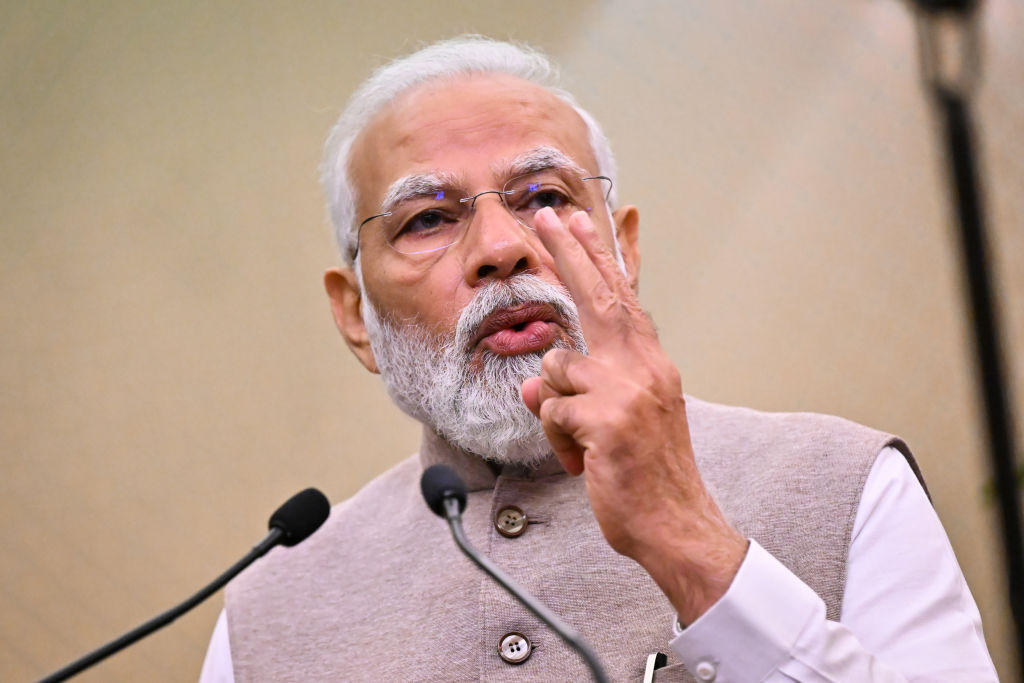- Thursday, May 02, 2024
Under a document, Modi has reportedly asked officials to outline strategies by around May to propel the economy to $6.69 trillion in nominal terms by 2030, up from around $3.51 trillion at present.

By: Shubham Ghosh
INDIAN prime minister Narendra Modi, who has expressed confidence in winning the upcoming national election in the country starting April 19, has set an ambitious goal of approximately doubling the nation’s economy and exports within this decade, Reuters has reported after witnessing a government document.
During election rallies in run-up to the elections, the PM has underscored economic growth as a major accomplishment of his decade-long governance and has pledged to elevate the economy from its current fifth position to the third largest globally if he secures a third consecutive term, something that many pre-poll surveys have projected.
According to the October document, Modi has directed officials to outline strategies by around May to propel the economy to $6.69 trillion (£5.3 trillion) in nominal terms by 2030, up from approximately $3.51 trillion (£2.78 trillion) at present. While specifics on achieving this target are lacking, the document serves as a foundation for official meetings, the report added.
Read: Modi has brilliantly used Indian economy to enhance his political legacy
At the time of beginning his second term in 2019, Modi pledged to elevate the Indian economy to $5 trillion (£3.96 trillion) by the current fiscal year. However, largely due to disruptions stemming from the Covid-19 pandemic, attaining this objective is now practically unfeasible.
The document outlines Modi’s aim for the subsequent six years: to augment per capita income to $4,418 (£3,507) from approximately $2,500 (£1,984). However, it does not specify the required spending or reforms necessary to realise the goal.
Saugata Bhattacharya, an independent economist, said if the real GDP can rise by 6-6.5 per cent, inflation stays around 4.5 per cent and the Indian rupee continues to depreciate against the dollar by 1-1.5 per cent annually, the economy can double in seven years in nominal dollar terms.
Read: Despite populism, Modi a hit among India elites: report
“The issue that a vision document should address is the set of structural reforms required to sustain this or a higher real GDP growth rate over a long time, a very difficult feat,” he was quoted as saying by Reuters.
Nevertheless, it is anticipated that the economy expanded by approximately eight per cent in the previous fiscal year, concluding on March 31, outpacing other major countries. This growth surge was propelled by robust manufacturing and construction sectors, fueled by government expenditure.
A former senior official of the Indian finance ministry, Subhas Chandra Garg, opined that growth projections like those in the documents are mainly based on “backward arithmetic calculations” and do not have any “reform and investment plan”.
“Usually such mental gymnastics based on arithmetic calculations and assumptions are meaningless unless there is serious reform and investment plan to test it for real economy dynamics,” Garg, who was the finance secretary in the Modi government until 2019, said.
While the Modi government’s economic performance has been praised in many quarters, including in foreign countries, the opposition have accused it of doing little to generate employment and reduce rural difficulties. It has also been claimed that the divide between the rich and poor has widened in Modi’s times.
According to the document, the Modi government aims to propel exports of goods and services to $1.58 trillion (£1.25 trillion) by 2030, up from approximately $700 billion (£556 billion). This increase could potentially double India’s share of global trade to over four per cent.
The government also intends to concentrate on 70 areas of enhancement, including workforce skills and vocational training, addressing critical concerns raised by industry leaders regarding the skill levels of the labour force.
Targets outlined in the document include raising the literacy rate to 82 per cent by 2030 from the current 78 per cent, reducing unemployment to less than five per cent from eight per cent, and increasing the labour-force participation rate to over 50 per cent from the current 46 per cent.
Modi has emphasized during rallies that he needs to renew his mandate to execute measures aimed at propelling India towards becoming a developed economy by 2047, coinciding with its centenary of independence, from its current status as a mid-income country.
However, specific measures to achieve this goal have not been explicitly outlined.
(With Reuters inputs)
![]()